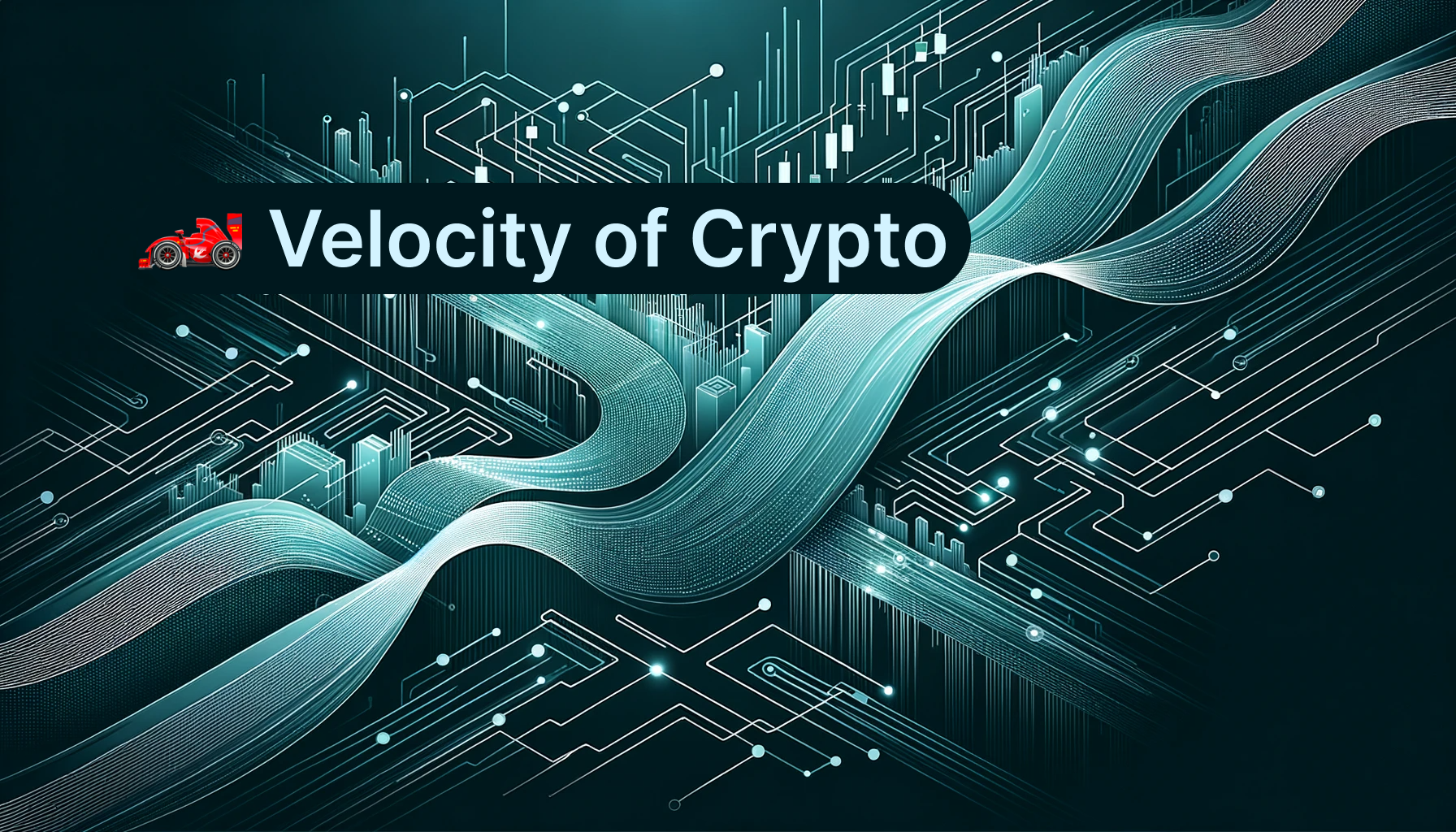
🏎️ The Velocity of Crypto
The secret for success in crypto they don't want you to know about
One of the crypto’s most powerful attributes is what I call ‘velocity’.
A social network scales it’s value exponentially as new users join, a phenomenon known as Metcalfe’s law. We can see a similar multiplicative rule with this idea of ‘velocity’ in crypto.
Now the concept of velocity and money isn’t new.
In a simple view of macroeconomics, the velocity of money refers to the relationship between bank reserve ratios and the amount of circulating money – since credit acts as a multiplier on the M1 (Fed 'brrr' money) to create M2 (Bank deposits, bonds) – money in the real economy.
If there is $100 in M1 and the reserve ratio is 20%, the total funds that can be lent out is $80, which can be deposited, lent out again, etc… converging to a point where the M2 is $500 ($100 in M1 + $400 in credit)
There are various other factors that make this more complex such as consumer confidence – but it’s a good lens to view how we can have more value in a system by pulling a lever without putting more money in the form of the money supply.
However, with the programmable nature of crypto and the ability to do seigniorage (aka mint new money), this opens up different ways for how this velocity can change.
One of the key insights about this velocity is that most successful products in crypto generally have a high velocity, pared with intrinsic PMF.
This is a little abstract, so I'll try to break it down:
FriendTech:
Friendtech works by allowing users to buy and sell keys against a bonding curve. The velocity of this system is high since guaranteed liquidity ensures that there is less loss external to the system.
The only fees in place are a 5% fee for the creator and a 5% fee for the platform. While liquidity isn’t lent out like it is with the economics example, this 10% total fee limits velocity since value is now leaking externally.
However, velocity is high otherwise, since participants are rolling their gains into other FT keys, or at least keeping their keys – keeping velocity high. The points system recognizes this and rewards buying of keys to keep the velocity high.
To illustrate this point further, suppose there was a competitor called CoinTech that was entirely based on coins and didn’t use a bonding curve and used AMM liquidity instead
The velocity on this system is much lower, as even though the net trading fees might be much smaller, things like dumping, premine, sniping, heavily reduce the velocity as value flows out of the system – reducing the velocity of money and the success of the overall system.
Pound for pound, the organic usage of both could be the same, but since FT has a much higher velocity – it’s able to succeed.
BTC (and ETH) vs Altcoins
BTC and ETH both have strong forms of PMF – BTC as an SoV, and ETH as the gas token.
Both have very high velocity – BTC often has the deepest liquidity and greatest amount of institutional integrations – and ETH much the same, with an entire ecosystem of LSDs around unlocking value for ETH.
While many altcoins have low PMF and low velocity, TRX, the native token of Tron is a great example of a low velocity ecosystem but a good PMF.
The PMF for Tron is strong – we’ve seen record amounts of usage from all the transactions on the platform and fees that have even surpassed Ethereum as of late.
However, a centralized supply with an extractive core team, along with significantly weaker liquidity and adoption mean that the velocity is much lower. No one is staking or building on Tron.
Perpetuals vs Options
The PMF for perpetuals is pretty obvious: being able to take extreme leverage on a small account is really attractive – especially for retail, and hedge funds looking for deep liquidity.
The velocity is also very high – the net cost of creating a new contract is low, and the UX for perps is very good, and participants often continue rolling their gains into buying more perps.
The PMF for Options is also strong: Miners and other institutional participants want to hedge their exposure.
The velocity is significantly lower compared to perps – the longer term nature of these contracts, lack of retail, and overall lower degeneracy makes for much lower velocity for options.
Conclusion:
Overall, viewing success as a factor of velocity is helpful as a frame of reference for evaluating why or what makes a crypto product successful.
Specifically,
pinning down where the intrinsic PMF is from
Are people genuinely interested in chatting to influencers in a more private setting? – in the case of FT
figuring out factors that influence velocity – and how the velocity is tied to the PMF
A points system in the case of FT is a key driver of velocity as it feeds into the intrinsic PMF - buying keys encourages people to talk to others
Social pressure around (3,3) where users don’t sell each others keys increases the wealth effect – increasing velocity
Taxes decrease velocity – but enough of the proceeds are being rolled back into buying more keys – offsetting this change in velocity.